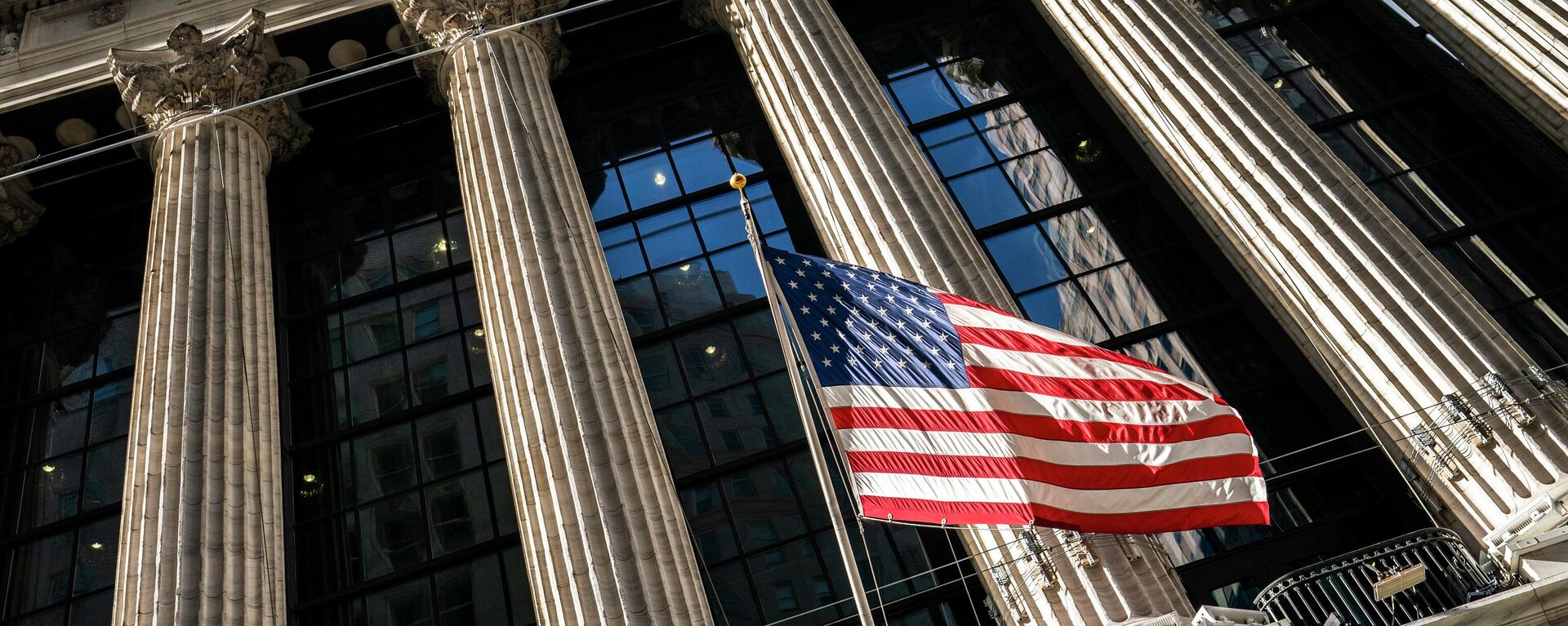https://sputnikglobe.com/20220803/us-could-do-another-75-bps-rate-hike-no-repeat-of-great-recession-seen---feds-daly-1098089514.html
US Could Do Another 75-bps Rate Hike, No Repeat of Great Recession Seen - Fed’s Daly
US Could Do Another 75-bps Rate Hike, No Repeat of Great Recession Seen - Fed’s Daly
Sputnik International
WASHINGTON (Sputnik) - The United States can digest a 75-basis point rate hike for a third time in a row if necessary as the economy is not at the risk of... 03.08.2022, Sputnik International
2022-08-03T21:12+0000
2022-08-03T21:12+0000
2022-08-03T21:12+0000
us federal reserve
recession
inflation
https://cdn1.img.sputnikglobe.com/img/07e5/0b/1d/1091122895_0:0:3295:1853_1920x0_80_0_0_32fd162debfeef26ea1fdc8d873910c7.jpg
"A 50 bps hike would be reasonable in September," Daly said in a live streamed speech that discussed the quantum likely for the Fed’s next rate increase. "However, if we see inflation galloping ahead unabated, [a] 75-bps hike may be more suitable. I do not expect a repetition of the Great Recession."After four rate hikes since March that brought key lending rates from nearly zero to as high as 2.5%, the Fed is nonplussed that inflation, as measured by the Consumer Price Index, hasn’t budged from four-decade highs, growing at a pace of 9.1% in the year to June.The central bank’s next rate hike is due on September 21. In its last two increases for July and June, it opted for 75-bps hikes. Economists think that for next month, the Fed may opt for a 50-bps increase if recent indications of a slowing labor market turn out to be true.The labor market has been the backbone of the US economy, propelling the nation to a dramatic recovery from the 2020 coronavirus pandemic.Unemployment reached a record high of 14.8% in April 2020, with the loss of some 20 million jobs after the coronavirus breakout. Jobs recovery has been stellar since, with the unemployment rate staying at 3.6% since April this year, below the 4% defined by the Fed as "maximum employment".But runaway jobs growth and surging wages have also led to runaway inflation, with prices of goods and services growing at their fastest since the 1980s.As for the definition of recession, Daly and a host of senior Fed bankers have disputed the notion that the United States was in one despite negative gross domestic product growth in the first two quarters of the year which technically places the economy in a recession.The two quarters of negative GDP growth this year were the first of their kind after a similar occurrence in 2020, in the aftermath of the coronavirus breakout. The so-called Great Recession itself occurred in 2008/09 as a global markets meltdown led to a global financial crisis.
https://sputnikglobe.com/20220803/feds-bullard-claims-its-hard-to-call-us-recession-when-job-market-so-strong-1098085580.html
Sputnik International
feedback@sputniknews.com
+74956456601
MIA „Rossiya Segodnya“
2022
Sputnik International
feedback@sputniknews.com
+74956456601
MIA „Rossiya Segodnya“
News
en_EN
Sputnik International
feedback@sputniknews.com
+74956456601
MIA „Rossiya Segodnya“
Sputnik International
feedback@sputniknews.com
+74956456601
MIA „Rossiya Segodnya“
us federal reserve, recession, inflation
us federal reserve, recession, inflation
US Could Do Another 75-bps Rate Hike, No Repeat of Great Recession Seen - Fed’s Daly
WASHINGTON (Sputnik) - The United States can digest a 75-basis point rate hike for a third time in a row if necessary as the economy is not at the risk of another "Great Recession," the Federal Reserve’s regional head for San Francisco, Mary Daly, said Wednesday.
"A 50 bps hike would be reasonable in September," Daly said in a live streamed speech that discussed the quantum likely for the Fed’s next rate increase. "However, if we see inflation galloping ahead unabated, [a] 75-bps hike may be more suitable. I do not expect a repetition of the Great Recession."
After four rate hikes since March that brought key lending rates from nearly zero to as high as 2.5%, the Fed is nonplussed that inflation, as measured by the Consumer Price Index, hasn’t budged from four-decade highs, growing at a pace of 9.1% in the year to June.
The central bank’s next rate hike is due on September 21. In its last two increases for July and June, it opted for 75-bps hikes. Economists think that for next month, the Fed may opt for a 50-bps increase if recent indications of a slowing labor market turn out to be true.
The labor market has been the backbone of the US economy, propelling the nation to a dramatic recovery from the 2020 coronavirus pandemic.
Unemployment reached a record high of 14.8% in April 2020, with the loss of some 20 million jobs after the coronavirus breakout. Jobs recovery has been stellar since, with the unemployment rate staying at 3.6% since April this year, below the 4% defined by the Fed as "maximum employment".
But runaway jobs growth and surging wages have also led to runaway inflation, with prices of goods and services growing at their fastest since the 1980s.
As for the definition of recession, Daly and a host of senior Fed bankers have disputed the notion that the United States was in one despite negative gross domestic product growth in the first two quarters of the year which technically places the economy in a recession.
"I don't see people going through a recession right now," Daly stressed.
The two quarters of negative GDP growth this year were the first of their kind after a similar occurrence in 2020, in the aftermath of the coronavirus breakout. The so-called Great Recession itself occurred in 2008/09 as a global markets meltdown led to a global financial crisis.


